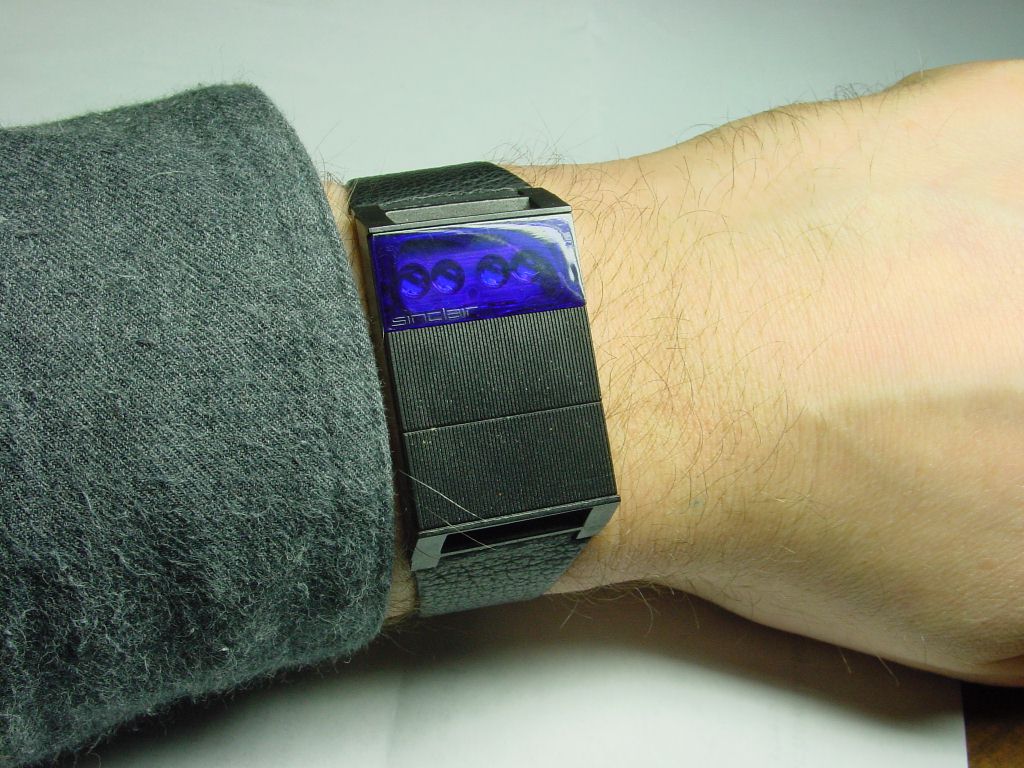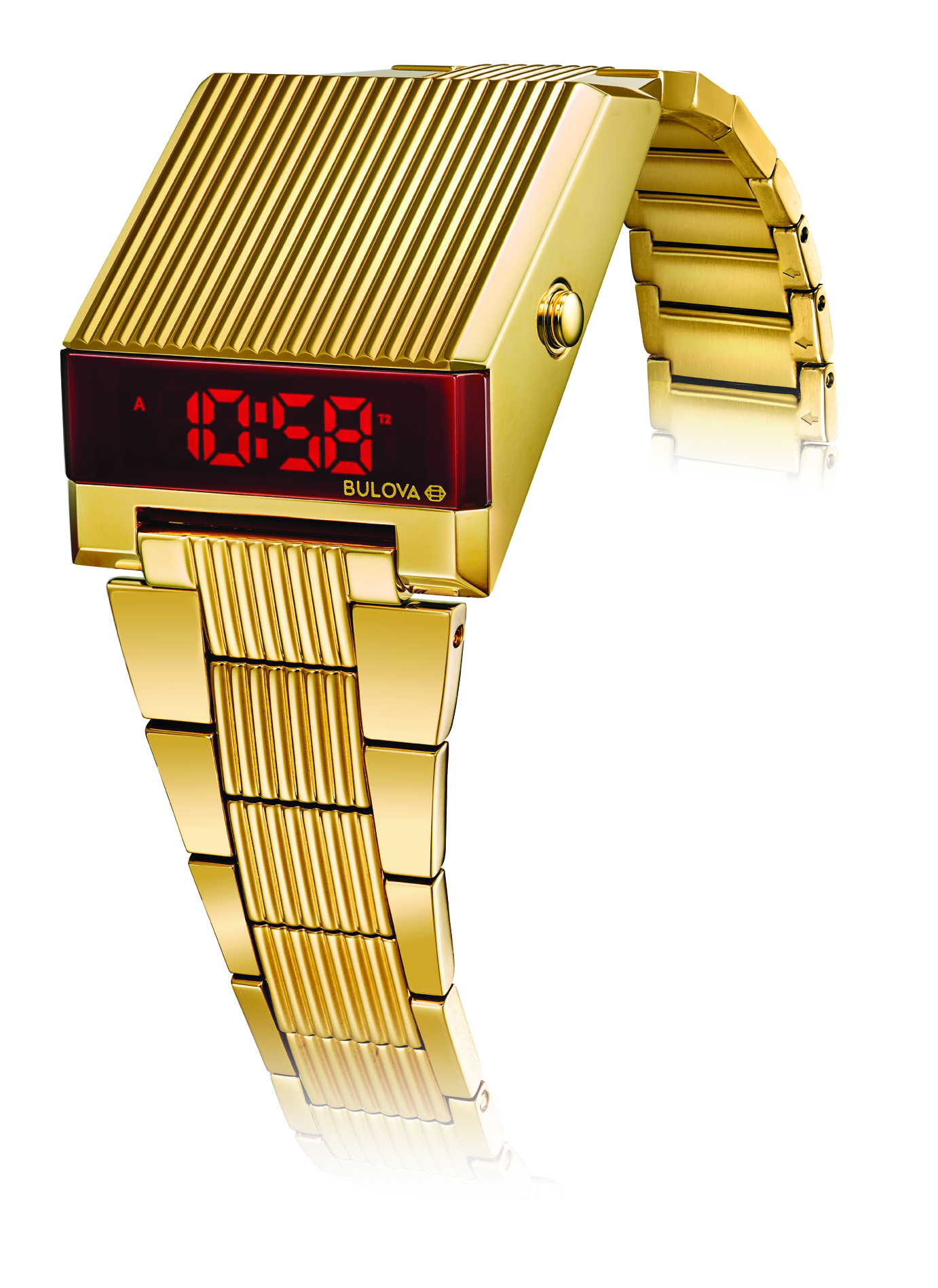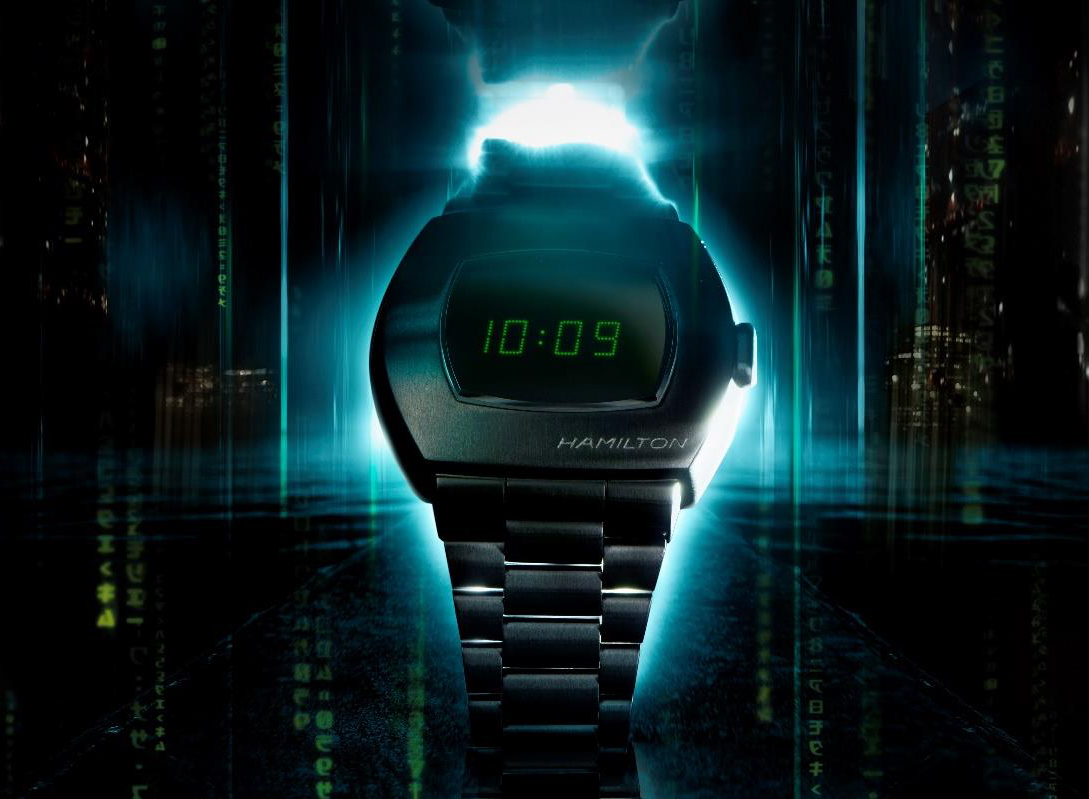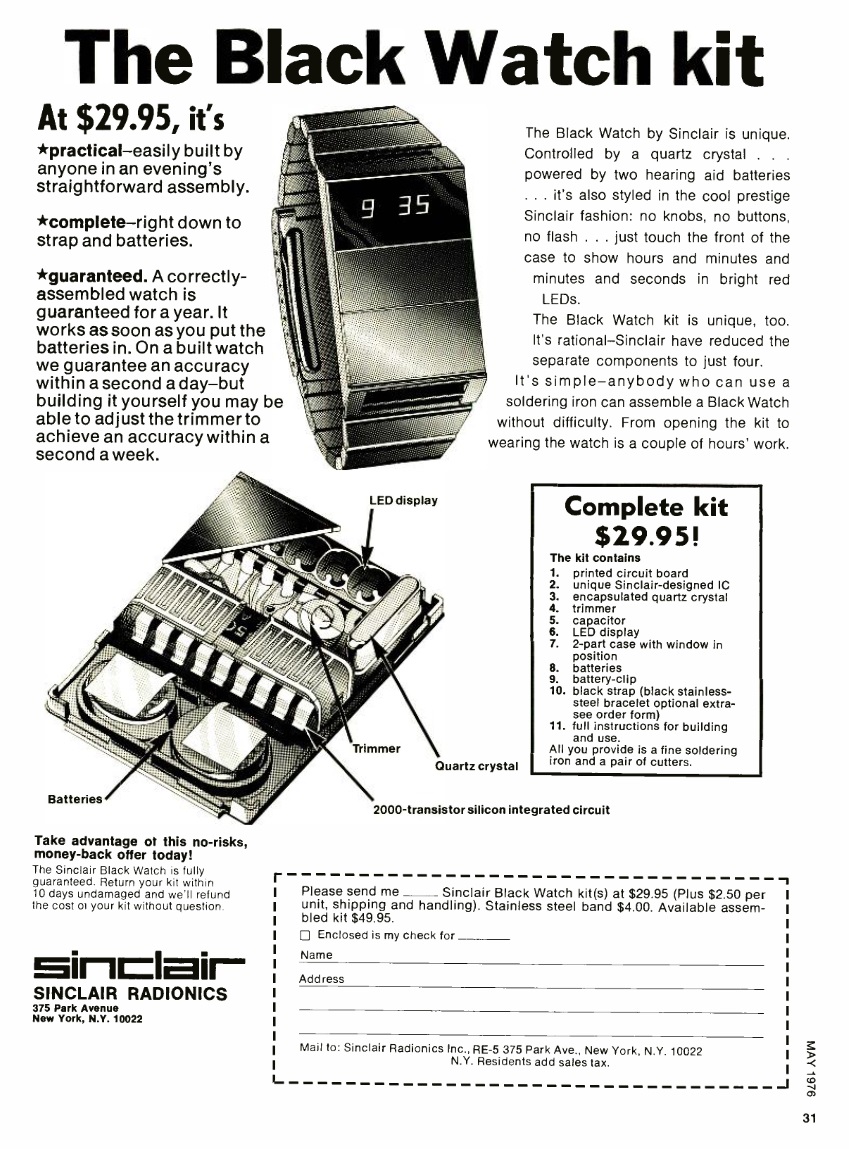Everything in fashion comes around again eventually, but LED watches looked like an exception until vintage examples from the seventies started commanding five figure sums at auctions. That has contemporary watchmakers interested and, given today’s obsession with all things retro, taking a punt on a modern day LED could bring you serious street style credibility, as Simon de Burton discovers.
September’s death of eccentric British inventor Sir Clive Sinclair prompted a flurry of obituaries in the tabloids and broadsheets, most of which led-off on the ridicule he attracted for his C5, a recumbent electric trike with plastic, wedge-shaped bodywork and under-thigh handlebars.
As epic fails go, I can vouch for the fact that the C5 really was more epic than most. Starting out in newspapers during my early 20s, one of my first jobs was in the ‘promotions department’ of a leading regional daily where I was tasked with taking a C5 onto the streets of the region’s major towns to publicise its availability as a competition prize.
During the intervening three decades, I have driven Formula One cars, hit 220 mph in a Bugatti Veyron, survived ragged-edge laps of Germany’s notorious Nurburgring circuit and raced motorcycles both on and off road — but have never felt quite the level of fear that comes with piloting a C5 in a traffic-filled street at dusk. Especially with the battery nearing the end of its 20 mile range.
But, while Sinclair achieved enormous success by marketing both the world’s first pocket calculator and the ZX Spectrum home computer, he should also be remembered for his foray into horology which, while far from leaving a major landmark in the history of timekeeping, was interesting nonetheless.
Back in 2005, I went to interview him at his duplex penthouse overlooking Nelson’s column in order to learn about the long-forgotten ‘Black Watch’ produced by his firm, Sinclair Radionics.
For those who don’t remember it (i.e. most people) The Black Watch was launched in 1975 and had an unusually frivolous name for a Sinclair product in that it alluded both to the moulded plastic case and simultaneously made reference to the noble Scottish regiment.

The Black Watch could be bought as a kit for £17.95/$29.95 or in ready-to-wear form for an extra ten bucks. It had a five-digit LED display activated by two panels beneath the face, which gradually dimmed to save power. A more expensive version of The Black Watch, cryptically coloured grey, added a date function but otherwise looked the same styled, according to contemporary advertising: “in the cool prestige Sinclair fashion – no knobs, no buttons, no flash.”
The ads further claimed that the kit version could be ‘easily built by anyone who could use a soldering iron in an evening’s straightforward assembly’ (which makes me think of that comment about how car owner’s manuals used to tell people how to check the ignition timing, whereas now they warn against drinking the contents of the battery….).
Anyway, like so many pioneering objects, The Black Watch was a great idea that didn’t really work. The so-called ‘I-Squared L’ electronic chip was adversely affected by static electricity from the nylon clothing of the era, a problem that caused its two hearing aid batteries to run down within hours rather than the 10 days suggested.
And, despite claims of accuracy to within a second per day, The Black Watch would gain or lose time dramatically according to the ambient temperature.
The most frustrated customers were probably the ones who went for the kit option which was not so straightforward to assemble as it appeared. Even the boffins at Practical Wireless magazine had to resort to wire, clothes pegs and drawing pins to get it all together — and then spent four days setting the time.
But while The Black Watch was clearly a major flop, let’s not forget that LED watches seemed almost as futuristic in the mid ’70s as the Metaverse seems to us today.
They were a brand new concept, and new concepts invariably have teething problems, but the LED watch was superseded almost before it had been perfected when, among other drawbacks, the slight inconvenience of not being able to see the display in bright conditions led to it giving way to the LCD display.
LED has not, however, been lying entirely dead in the water. For a start, ‘vintage’ LED watches occasionally crop-up at serious horological auctions, as evinced in September when Antiquorum Geneva sold a Digital Time Computer by Pulsar (then a sub-brand of Hamilton) for CHF 3000.

The model is significant in the history of horology for being the world’s first wrist watch to feature an LED digital display having appeared on the market in 1972, two years after Hamilton first announced its intention to make it.
Those who were around at the time will remember the excitement which surrounded the great new technology of electronic digital watches, and how the hype was fuelled by the fact that they were so remarkably expensive – at $2,000 (the equivalent of more than $12,000 today) the first gold plated Pulsars cost considerably more than many a high quality mechanical watch but offered none of the heritage or, it turned out, dependability.
The LED display, which remained in battery-preserving sleep mode until a button was pressed, proved virtually impossible to read in even moderately bright sunlight, and if the merest hint of moisture entered the case the wearer could look forward to a random display of hieroglyphics that marked the certain demise of his or her cutting-edge timepiece.
But at the time the Pulsar was regarded as the last word in timekeeping technology, and it’s said that there were audible gasps of amazement in cinemas around the world when Roger Moore fired-up the one featured in the Bond film Live and Let Die.
Among the various drawbacks of such ‘vintage’ LEDs, however, is the availability of suitable batteries and, of course, the fact that they don’t survive anything like the three to five years we’ve come to expect of modern digital watches.
But if you find yourself on the hunt for a ‘modern classic’ LED that you really can wear every day, look no further than to the avant garde creations of Ventura which, in 2000, launched its SPARC range of ‘self-winding digital watches’ that used a mechanical movement to power a digital display. Its futuristic-looking cases were made from Titanox (hardened titanium) or super-hardened Durinox steel.
Also notable was Ventura’s introduction of the EasySkrol operating system – a rolling cylinder that functioned in the manner of a computer mouse to enable the wearer to easily scroll from one LED display to another. Priced at around £1,000 new, examples command anything from £500 – £1,800 on pre-owned web sites depending on model and condition.
And, as implausible as it may sound, there is evidence that LED watches might be making a (small) comeback.
At this year’s ONLY WATCH charity auction watch customiser George Bamford partnered with Girard-Perregaux to create a 21st century version of the maker’s futuristic ‘Casquette’ digital driver’s watch of the 1970s.

Featuring the classic wedge-shaped case (designed for easy reading while at the wheel) the Bamford version was made from a combination of titanium and carbon fibre — and obliterated its pre-auction estimate of around £15,000 to eventually sell for £64,523.
Watch photographer Justin Hast landed a rather better deal recently when he found an original Casquette for sale on the internet for just £1,500. In full working order and in immaculate condition, it is one of just 2,200 made and, says Hast, has already proved to be a remarkable conversation starter.
“As soon as anyone spots it, they want to know all about it, and they want to touch it, too. The case is made from an unusual type of soft plastic, and it’s lovely to wear. Really ergonomic and surprisingly elegant. I do think good quality, vintage LED watches are complete sleepers at the moment. I bought the Casquette purely on the basis of its design, but objects from the ’70s seem to be coming back into fashion, and now I’ve developed an almost unhealthy obsession with the interesting and unusual LED watches that the era produced,” Mr Hast admits.

If you don’t fancy the idea of going vintage but do want to get the look for less, check out Bulova’s retro-fabulous Computron Re-edition from 2019, a 21st century version of its own digital driver’s watch first seen during the 1970s.
As with the Casquette, the Bulova’s distinctive, trapezoid case uses a side-on display to make it easier to read while holding a steering wheel and, like the original model, features an LED readout that needs manual activation. The watch is available in black on a rubber strap and gold plate or stainless steel on bracelet (the latter having a blue LED display) – and is priced at £199, which is about the same as the original.
And if you believe the ‘original’ will always be the best, Hamilton has brought back the aforementioned Digital Time Computer in the form of the PSR (it can’t be called Pulsar, because that name now belongs to Seiko).
 Available in an edition of 1,970 with ‘gold’ PVD cases at £900 or in a regular production steel version for £675, the watch is a dead ringer for the ’70s model although it actually features a ‘hybrid’ display that combines reflective LCD (so it can be read in daylight) with an OLED (organic light emitting diode) set-up that, at the push of a button, invokes the familiar red glow of the original.
Available in an edition of 1,970 with ‘gold’ PVD cases at £900 or in a regular production steel version for £675, the watch is a dead ringer for the ’70s model although it actually features a ‘hybrid’ display that combines reflective LCD (so it can be read in daylight) with an OLED (organic light emitting diode) set-up that, at the push of a button, invokes the familiar red glow of the original.
And, while your contemplating which one to go for, we’ll leave you with this quote from author Don Sauer’s history of the Hamilton watch company which shows that the current frenzy for a certain Patek Philippe Nautilus is nothing new: “Consider the customer who bought the last Pulsar in stock at Tiffany’s in New York just before Christmas, 1972,” wrote Sauer, “and received two offers for the watch before he could get out of the store.”
Can you imagine?


